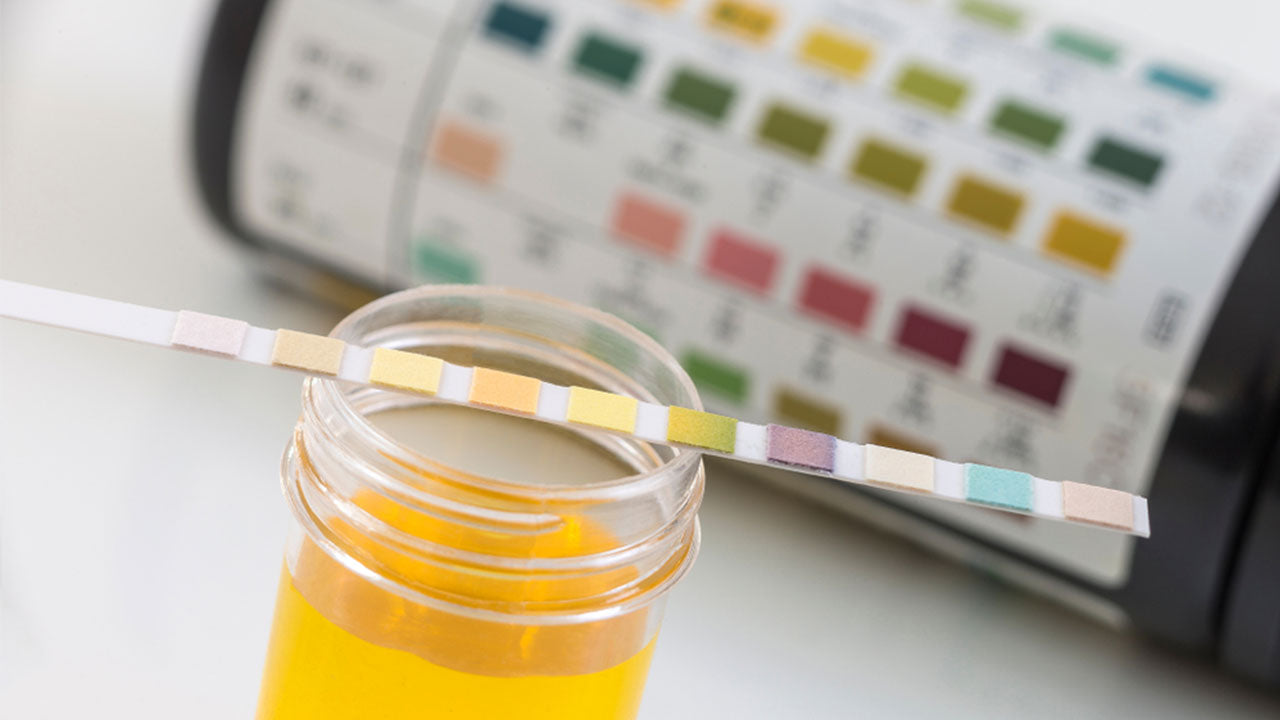How to Memorize Amino Acids: Your Study Hack for Acing the MCATs
 By: by Amino Science
By: by Amino Science

Whether you're studying to pass the MCATs (future medical students) or the PCATs (future pharmacists), you're going to need to summon extensive knowledge of the 20 main amino acids relevant to human health. We have a few mnemonics that can help you ace your upcoming exam. Read on to learn how to memorize amino acids.
The Use of Mnemonics for Memory
Mnemonic devices are memory aids, and can be anything from a rhyme, a song (like the alphabet song), or any other trick to remember a set of information for whatever reason. Researchers have confirmed that mnemonic strategies help improve memory in those with mild cognitive impairment by literally reshaping the brain network to support superior memory.
Some examples of mnemonics include the way people remember the order of colors in the rainbow: Red, Orange, Yellow, Green, Blue, Indigo, and Violet, which can be recalled by thinking of a man named ROY G. BIV, or by remembering the phrase "Rainbows Over Your Great Big Island Vista."
The mnemonic for order of operations is PEMDAS or "Please Excuse My Dear Aunt Sally": Parentheses, Exponents, Multiplication and Division, and Addition and Subtraction. Same with remembering the order of the plants that revolve around our sun: Mercury, Venus, Earth, Mars, Jupiter, Saturn, Uranus, and Neptune can be remembered with the phrase, “My Very Educated Mother Just Served Us Noodles.”
These sorts of mnemonic devices might only need to take up space in your head until you've fully retained the information, or these devices may serve you for the rest of your life, like remembering the clockwise order of North, East, South, and West by forever thinking, "Never Eat Soggy Waffles." As nonsensical as it may be, it's helpful!

How to Memorize Amino Acids: 6 Mnemonic Devices
Without further ado, here are the tricks for how to memorize 20 amino acids. MCATs are notoriously difficult and stressful, so if you can help yourself file away the information you need on the aminos in general, like which are polar and nonpolar, which are essential and nonessential, plus their structures and which have electrically charged side chains, you're that much closer to passing your exam.
Fundamentals First
Let's start with the structure of amino acids, as that is what classifies them each so distinctly.
1. Amino Acid Structures
Amino acids all have the same basic structure, with a hydrogen atom and three functional groups of molecules attached to a central atom. They start with a carbon atom at the center and are joined by an amino or amine group (~NH3+), a hydrogen atom, and a carboxyl group (~COOH). The final side chain is the one that makes each amino different: the R group is the variable group that makes each structure distinct.
The way to remember their collective structure is CORN, an acronym for the carboxyl group (CO), R group (R), and amino group (N).
When it comes to L- vs. D- amino acids, the difference is the direction that they rotate. For the L- or left-moving amino acids, starting with the carboxyl group (CO) the next structure that moves to the top will be the R group (R), and then the amino group (N). D- aminos move in the opposite direction showing you carboxyl, then amino, then the R group. The order stays the same, it's just a matter of whether the molecule rotates right or left.
CORN is easier to keep in mind than the non-word CONR for remembering which groups in what order surround the central carbon atom.
All 20 Amino Acids: Charged, Polar, and Nonpolar
Read on for ways to remember which amino acids are hydrophilic (polar) and which are hydrophobic (nonpolar), as well as a trick for remembering the basic (positively charged) and acidic (negatively charged) aminos. All 20 amino acids can be sorted into the three categories: charged, polar, and nonpolar.
2. Charged Amino Acids
In organic chemistry, of the 20 common amino acids, five have side chains that are able to be charged, two negatively and three positively.
- Negatively charged amino acids: Glutamate or glutamic acid (Glu, E) and aspartate or aspartic acid (Asp, D). These are the two acidic amino acids (hence the word "acid" in their names). Here's a good place to note that aspartate and glutamate are identical to asparagine (Asn, N) and glutamine (Gln, Q) except that the first two have negatively charged oxygen molecules attached to them, while the latter two have an amino group with nitrogen contained within. When you notice the "n" in each of their three-letter codes, think of nitrogen, and that may help you differentiate between them.
- Positively charged amino acids: Arginine (Arg, R), histidine (His, H), and lysine (Lys, K). These are also the three basic amino acids.
To remember these five we suggest the phrase: “Dragons Eat Knights Riding Horses.” It's based on their one-letter codes D, E, K, R, and H. As far as which one-letter code goes to which amino, we suggest you employ flashcards for memorizing the letter abbreviations, because as you can see, they don't necessarily contain the letter to which they're assigned.
3. Polar Amino Acids (Hydrophilic)
Polar amino acids are so classified because they contain side chains that prefer to reside in water environments (hydrophilic). Histidine, lysine, and arginine (the positively charged aminos) are also considered polar. The rest include: asparagine (Asn, N), aspartate (Asp, D), serine (Ser, S), glutamine (Gln, Q), threonine (Thr, T), glutamate (Glu, E), and tyrosine (Tyr, Y).
One way to remember these is by their one-letter codes: “Santa’s Team Darns New Quilts Every Year.”
4. Nonpolar Amino Acids (Hydrophobic)
The nonpolar, hydrophobic amino acids are:
- Alanine (Ala, A)
- Phenylalanine (Phe, F)
- Glycine (Gly, G)
- Proline (Pro, P)
- Isoleucine (Ile)
- Tryptophan (Trp, W)
- Leucine (Leu, L)
- Isoleucine (Ile, I)
- Valine (Val, V)
- Methionine (Met, M)
- Cysteine (Cys, C)
Here's a handy way to remember these 10 nonpolar aminos: “Grandma Always Visits London In May For Winston Churchill's Party.” Winston Churchill was born November 30, 1874, but as the prime minister during World War II, you might imagine he'd have a party each year on May 8th, which is Victory in Europe Day, celebrating the formal surrender of the Nazis to the Allies. This is a mnemonic device that could help you on any upcoming history exams too!
Aromatic, Essential, and Nonessential Amino Acids
There are a few more classifications that might be useful to know on MCAT amino acids questions: which amino acids are aromatic and which are considered essential vs. nonessential.
5. Essential Amino Acids
The essential amino acids are the ones we need to get from our food, because they cannot be produced independently inside the body. They include:
- Histidine
- Leucine
- Isoleucine
- Lysine
- Methionine
- Phenylalanine
- Threonine
- Tryptophan
- Valine
The best mnemonic device for this one is not based on the one-letter codes, but instead on the first letter of each amino: PVT. T.M. HILL. Just think of Private T.M. Hill as one of the brave soldiers who returned from war and happily celebrates each May with Winston Churchill.
6. Nonessential Amino Acids
Here are the remaining 11 amino acids that our bodies can synthesize independently:
- Alanine
- Arginine
- Asparagine
- Aspartic acid
- Cysteine
- Glutamic acid
- Glutamine
- Glycine
- Proline
- Serine
- Tyrosine
You can use the first letter of each one as a mnemonic: "Ah, Almost All Girls Go Crazy After Getting Taken Prom Shopping." If you think the guys go as crazy as the girls, feel free to sub in one G-word for the other.
Memorable Aminos
Now you have six mnemonic tools for how to memorize the amino acids in preparation for your exams. There's always more information to learn (for example, the three aromatic amino acids), but these memory tricks can help you lay the groundwork for a pre-med education that's only just beginning.
You can also increase your concentration and focus on test day by taking a targeted blend of performance-enhancing amino acids. You can find it here. Best of luck!

Up to 25% off Amino
Shop NowTAGS: knowledge
Join the Community
Comments (0)
Most Craveable Recipes




 833-264-6620
833-264-6620



















